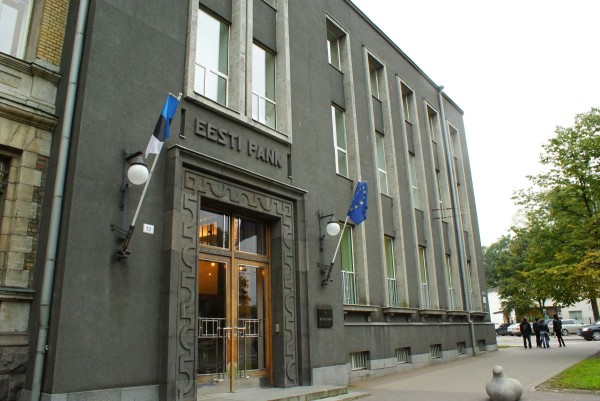Estonia’s ‘Singing Revolution’
Rick Steves, Special to Postmedia Network
Published:
April 2, 2018
Updated:
April 2, 2018 11:51 AM EDT
Estonians enjoy a collective culture -- and that includes sharing food and drink. RICK STEVES PHOTO
On my last visit to Tallinn, while I was admiring the view from the terrace atop the city walls, a kindly middle-aged man approached.
All Article: http://torontosun.com/travel/e...
From a satchel on his shoulder, he pulled out a stack of music CDs, all recordings of Tallinn’s famous Song Festivals. While he was eager to make a sale, my friend was even more intent that I learn the story of how singing helped lead his country to independence.
In 2018, the scrappy Republic of Estonia marks the 100th anniversary of its founding. Having endured 200 years of czarist rule, the unravelling of the Russian Empire, and the turmoil of World War I, the Estonian people faced an uphill battle when they declared their republic in 1918. They quickly adopted a democratic Western European-style government and set about building a robust economy.
But when you are a small, humble nation lodged between two giants like Russia and Germany, simply surviving is a challenge. The good times didn’t last — in 1940 the Soviets marched in, and Germany invaded in 1941. By the end of World War II, Estonia found itself annexed again to its neighbour, which by then had become the Soviet Union.
Thus began the tiny nation’s 50-year nightmare. Estonians saw their culture swept away, with Russian replacing Estonian as the language in schools. Russians and Ukrainians were moved in, and Estonians were shipped out. Moscow wouldn’t even allow locals to wave their own flag.
But Estonians were determined to maintain their cultural identity. They had no weapons, but they created their own power — remarkably — by banding together and singing.
Song has long been a cherished Estonian form of expression, a way to keep hold of their national character, especially in the face of foreign domination. As long ago as 1869 (during another era of Russian subjugation), Estonians gathered in massive choirs to sing and to celebrate their cultural uniqueness.
Later, during the Soviet era, a brave choir master, Gustav Ernesaks, had the nerve in 1947 to lead singers in Estonia’s unofficial national anthem. For planting the seeds of the singing revolution to come, Ernesaks is still revered.
Finally, as the USSR began to crumble, the Estonians mobilized again, using song to demand independence. In 1988, they gathered — 300,000 strong, a third of the population — at the Song Festival Grounds outside Tallinn.
Locals vividly recall coming out to sing patriotic songs while dressed in folk costumes sewn years before by their grandmothers. The next year, the people of Latvia, Lithuania, and Estonia held hands to make the “Baltic Chain,” a human bond that stretched 644 km from Vilnius, Lithuania, to Riga, Latvia, to Tallinn. Some feared a Tiananmen Square–type bloodbath, but the Estonians just kept singing.
This so-called Singing Revolution, peaceful and nonviolent, persisted for five years, and in the end, Estonians gained their freedom. It was a remarkable achievement: one million singing Estonians succeeded against 150 million Russian occupiers.
The spirit of song continues in Estonia. Every five years, the Song Festival Grounds welcome 25,000 singers and 100,000 spectators at the current amphitheatre, built in 1959. This is a national monument because of the stirring role it played in Estonia’s fight for independence. I’ve visited Tallinn several times, and the thrill of this phenomenon — and its historic importance — continues to inspire me.
Thankfully, the Russians did not succeed in diluting Estonia into oblivion. Since gaining independence, the country has made great strides in its post-communist recovery. It joined the EU and NATO in 2004, adopted the euro currency in 2011, and today feels pretty much as “Western” as its Nordic neighbours.
The capital city’s Old Town remains the best-preserved medieval centre in all of Nordic Europe. Though cruise ships have discovered Tallinn, and sightseers mob its cobbles most days, its charm withstands the crowds.
I make a point to get beyond the tacky tourism of the city’s central square. In ancient townhouses and guild halls around town, several humble but worthwhile museums put Estonia’s storied past in context.
Symbolic suitcases outside Tallinn’s Museum of Occupations are a visual reminder of the people who fled –or were deported from — Estonia in the 20th century. SUZANNE KOTZ PHOTO
The compact Museum of Estonian History condenses 11,000 years of Estonian cultural history with relative ease, focusing on the events and traditions that have shaped the country’s psyche. And the sober Museum of Occupations, recounting Estonian life under Soviet and German rule, is a reminder of the struggles faced by small countries in the shadow of empires.
Just outside town, the Estonian Open-Air Museum displays salvaged farm buildings, windmills, and an old church, all transported from rural areas to a park-like setting to both save and share Estonia’s traditions.
Visiting this tiny country, you can’t help but feel the connection of its people to their land and heritage — and their enthusiastic pride in, and appreciation for, both their uniqueness and their hard-won freedom.
rick@ricksteves.com
Estonia’s ‘Singing Revolution’ (1)
Eestlased Eestis | 03 Apr 2018 | EWR
Viimased kommentaarid
Kommentaarid on kirjutatud EWR lugejate poolt. Nende sisu ei pruugi ühtida EWR toimetuse seisukohtadega.
Laulev revolutsiooni tuleb tühja kõhuga kõige paremini välja, mida tühjem seda parem, pange kõrva taha kui hamba alla ei ole panna.
Eestlased Eestis
TRENDING
























